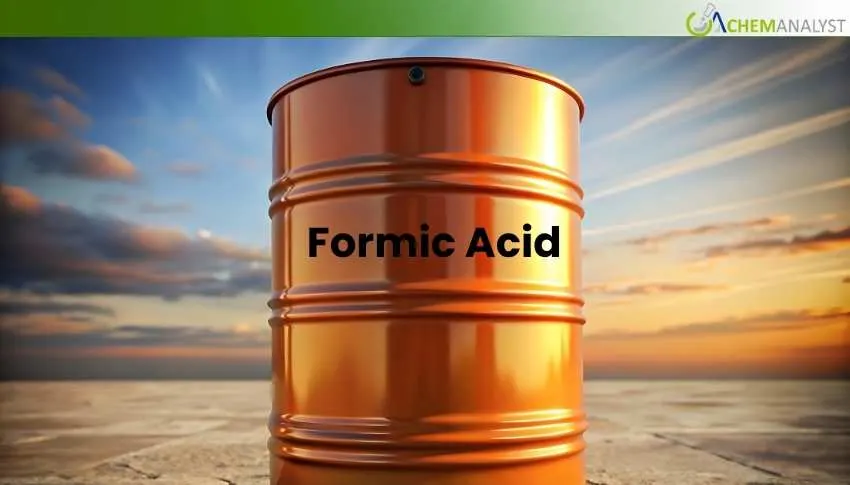Welcome To ChemAnalyst

The Netherlands Formic Acid market exhibited a small decline in prices by 0.63% in the first week of October 2025, with no price fluctuation the second and third weeks. The 12-week average indicated balanced market consecutive sideways market against the backdrop of weak demand from Europe and stability in the supply chain. A bird flu outbreak in the poultry industry in Europe reduced the use of feed preservatives, which are used as a typical feed preservative in animal feed. Disruptions in the port of Rotterdam during the month included the 48-hour lashing strike and terminal stoppages.
In the first week of October 2025, prices for Formic Acid FD Rotterdam decreased by 0.63%, influenced by weakening consumption of poultry feed due to avian flu and port disruptions. The second and third weeks went unchanged, demonstrating the same 12-week period of price movements moving sideways. Formic Acid price stability was aided by balanced domestic and import volumes to ensure stable run rates and no production disruptions or spikes in demand.
In October 2025, the demand for formic acid in the Netherlands softened due to the avian flu isolating poultry and delaying the uptake of feed preservatives, though as demand for meat continued to rise along with urbanization, the demand for natural additives remained moderate. The DSM-Firmenich-Schothorst formed a partnership to produce backed sustainable nutrition innovations on October 3, while caution would remain with plans for the EU to reduce emissions and culling of livestock would affect priming of livestock for continued sale. Consumption in textiles and leather dyeing was stable. There were early signs of disruption to supply with strikes against the Rotterdam Port continuing 48-hour lashing beginning October 8, RWG terminal closures, and ECT Delta/Euromax shutdowns October 9 were expected to delay formic acid imports from Germany, China, and Finland and exports to Belgium, France, and the UK. During this time, domestic production decreased due to cheaper formic acid imports, constant imports into Europoort and Botlek remained at 65% operative. Essentially systems have balanced with port disruption managing adaptation of sourcing while remaining sustainably neutral.
The bird flu epidemic diminished poultry feed consumption, which was one factor in the initial drop in formic acid prices. Disruptions to Rotterdam port from strikes and shutdowns of terminals delayed imports of ingredients. However, downstream production for feed increased and steady inflows of other products resulted in no imbalances in formic acid supply-and-demand. While stale inventory from early October could drive downside risk, a balanced supply chain, fading downside risk, and neutral sentiment in the feed sector result in steady prices. Sustainability mandates are driving selective demand for specific types of natural additives while navigating issues related to disease, regulation, and logistics in a range-bound market.
ChemAnalyst, anticipates the formic acid market in the Netherlands has a decent chance to remain stable and range-bound into the end of October 2025, without major disruptions. Domestic feed production and formic acid imports have balanced supply, and the demand side of poultry containment has remained muted, with turbulence throughout the supply chain offset by recent innovations in sustainability. Port logistical issues and residual inventory risk may fluctuate the formic acid prices.
We use cookies to deliver the best possible experience on our website. To learn more, visit our Privacy Policy. By continuing to use this site or by closing this box, you consent to our use of cookies. More info.
